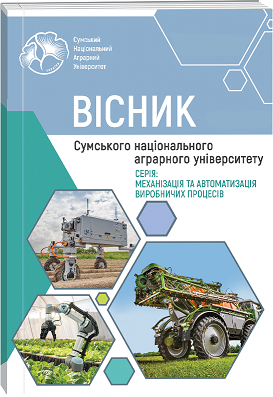METHODS OF DRYING FOOD PRODUCTS: ADVANTAGES, DISADVANTAGES AND DEVELOPMENT TRENDS
Abstract
Vegetables and fruits are essential sources of beneficial vitamins and minerals necessary for the normal functioning of the human body. Due to their high-water content, these products are very sensitive to temperature and quickly spoil, necessitating processing for long-term storage. After harvesting, about 70% of the crop can be lost within a short period due to the limited shelf life of fresh raw materials, significantly impacting economic indicators. The main factor leading to such significant losses is excessive moisture, which promotes the growth of harmful microflora and rapid spoilage of the produce. Therefore, storing raw materials with high moisture content is complicated by high temperatures in some countries, inadequate refrigerated facilities, and storage warehouses. The moisture content in harvested fresh products can reach 80–90%. Without proper processing, they are susceptible to mold and rot, which compromises their quality and renders them unfit for consumption. Furthermore, the harvesting window is limited and can be very short. To ensure quality food storage, harvested raw materials need to be processed promptly. One of the most common and efficient methods of such processing is drying. Drying is one of the ancient methods of crop preservation used in agriculture and the food industry. This method of quality processing ensures a long shelf life of the product, reduces weight and volume of the material, and eliminates microorganisms. Drying is the most effective method of processing when suitable conditions for storing the produce in its raw state are unavailable. However, if the drying technology is not followed correctly, it can reduce the shelf life and quality of the finished product. In addition to ensuring the established storage period, all quality indicators and nutrients contained in the raw product must be preserved during the drying process. As a result of the theoretical analysis of drying methods and techniques, including natural drying, convective drying, boiling layer drying, spraying, using high and ultra-high frequency energy, osmosis, extrusion, and sublimation, the advantages and disadvantages of each method were identified, and modern trends in implementing high-efficiency drying methods for raw materials were considered. New technologies and innovations in the field of food drying are aimed at improving efficiency, increasing the productivity of drying equipment by reducing processing time, as well as preserving nutrients and enhancing the quality of the finished product.
References
2. Chhabra, N., Arora, M., Garg, D., Kumar Samota, M. (2024) Spray freeze drying – A synergistic drying technology and its applications in the food industry to preserve bioactive compounds, Food Control, 155, doi:10.1016/j.foodcont.2023.110099
3. Djekic, I., Tomic, N., Bourdoux, S., Spilimbergo, S., Smigic, N., Udovicki, B., Hofland, G., Devlieghere, F., Rajkovic, A. (2018) Comparison of three types of drying (supercritical CO2, air and freeze) on the quality of dried apple – Quality index approach, LWT, 94, 64-72, doi:10.1016/j.lwt.2018.04.029
4. Habibat Animashaun, O., Samuel Sobowale, S. (2024) Microwave exposure of tomato varieties before catalytic oven drying and its effect on physicochemical and bioactive components studied by Fourier transform infrared (FTIR) spectroscopy, Food and Humanity, 2, doi:/10.1016/j.foohum.2023.12.005
5. Huang, Y., Sun, Y., Mehmood, A., Lu, T., Chen, X. (2024) Unraveling the temporal changes of Maillard reaction products and aroma profile in coffee leaves during hot-air drying, Journal of Food Composition and Analysis, 128, doi:10.1016/j.jfca.2024.106055.
6. Huang, D., Huang, W., Huang, S., Zhou, F., Gong, G., Li, L., Sunden, B. (2023) Applications of spouted bed technology in the drying of food products, 182, doi.10.1016/j.lwt.2023.114880.
7. González-Cavieres, L., Pérez-Won, M., Tabilo-Munizaga, G., Jara-Quijada, E., Díaz-Álvarez, R., Lemus-Mondaca, R. (2021) Advances in vacuum microwave drying (VMD) systems for food products,Trends in Food Science & Technology, 116, 626-638, doi:10.1016/j.tifs.2021.08.005.
8. Pravallika, K., Chakraborty, S., Singhal, R. S. (2023) Supercritical drying of food products: An insightful review, Journal of Food Engineering, 343, doi:10.1016/j.jfoodeng.2022.111375.
9. Reddy Mugi, V., Chandramohan, V.P. (2021) Shrinkage, effective diffusion coefficient, surface transfer coefficients and their factors during solar drying of food products – A review, Solar Energy, 229, 84-101, doi:10.1016/j.solener.2021.07.042.
10. Savoiskyi, O., Yakovliev, V., Sirenko, V. (2021). Determining the kinetic and energy parameters for a combined technique of drying apple raw materials using direct electric heating. Eastern-European Journal of Enterprise Technologies, vol. 1, 11 (109), pp. 33–41, doi: 10.15587/1729-4061.2021.224993.
11. Savoiskyi, O., Sirenko, V. (2023). Revealing the influence of ultrasonic processing on the kinetic parameters of convective and combined drying of raw apple materials. Eastern-European Journal of Enterprise Technologies, vol. 2, 11 (122), pp. 91–98, doi: 10.15587/1729-4061.2023.276748.
12. Septya Kusuma, H., Nurul Izzah, D. (2023) Irmanda Wastu Lintu Linggajati, Microwave-assisted drying of Ocimum sanctum leaves: Analysis of moisture content, drying kinetic model, and techno-economics, Applied Food Research, 3, 2, doi: 10.1016/j.afres.2023.100337.
13. Zambrano, M. V., Dutta, B., Mercer, D. G., MacLean, H. L., Touchie, M. F. (2019) Assessment of moisture content measurement methods of dried food products in small-scale operations in developing countries: A review, Trends in Food Science & Technology, 88, 484-496, doi: 0.1016/j.tifs.2019.04.006.

 ISSN
ISSN  ISSN
ISSN 



